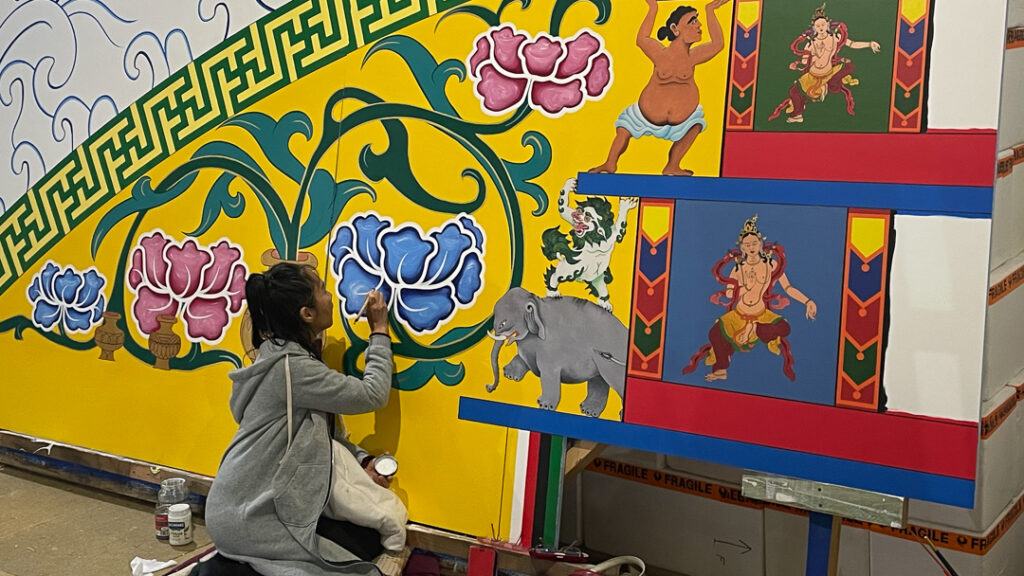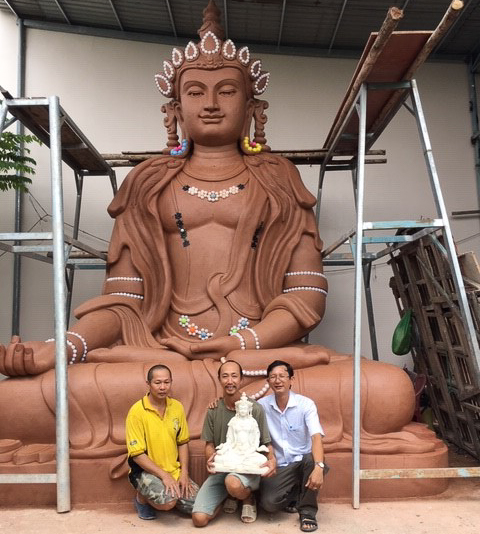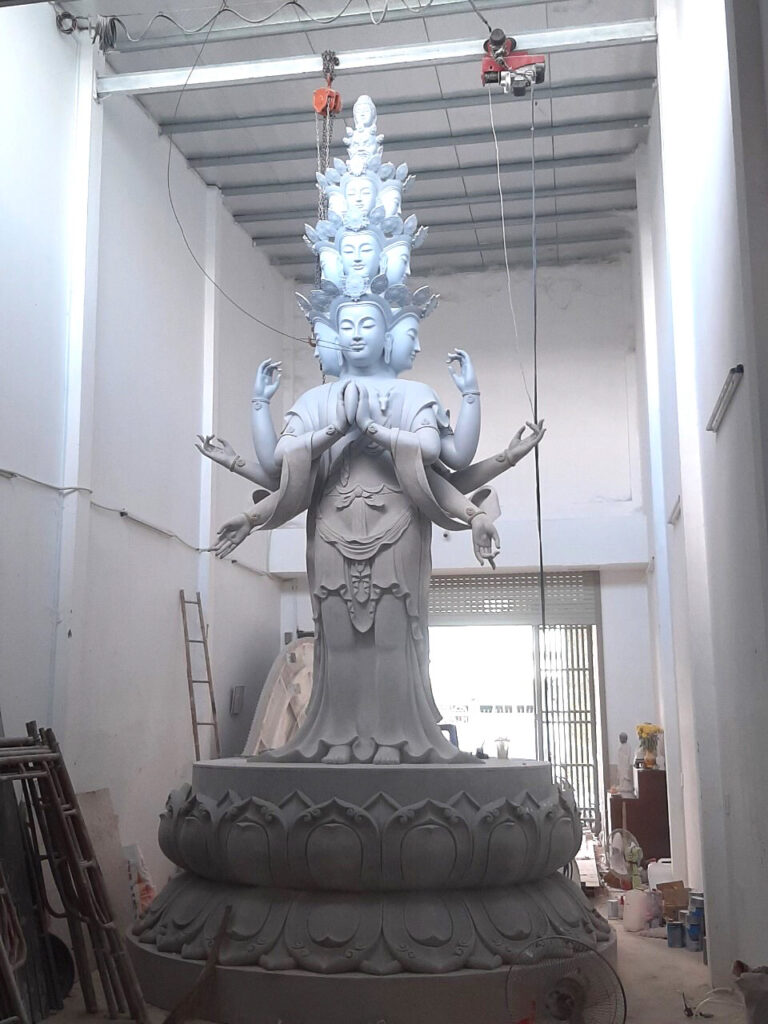
Deep in the Whipstick forest is a Buddhist wonder for all to enjoy.
Deep in a dun-coloured ironbark forest called the Whipstick looms the sublime Great Stupa of Universal Compassion. The stupa is a pagoda-like structure that houses Buddhist relics. This particular stupa near the Victorian city of Bendigo contains precious pearl-like objects formed from the ashes of cremated Buddhist masters. Around the stupa is a village-like settlement, including a peace park, memorial walls, a museum, a library, a cafe, gardens, and a retreat.
How did it get here? The original vision came from a Tibetan Lama, Thubten Yeshe, who was co-founder of the Foundation for the Preservation of the Mahayana Tradition (FPMT). He had visited Bendigo in 1983 and was impressed by the strong community support for a Buddhist centre. On his death, the vision was fulfilled by his co-founder, Lama Zopa Rinpoche.
The vision was to replicate Tibet’s 600-year-old Gyantse Stupa (Kumbum), featuring nine tiers, 78 chapels, and 108 gates. It’s intended to work as a three-dimensional mandala that enhances its spiritual powers.
- Larry, Guy, Cynthia and Tara part of the art team on the Kalachakra ceiling
- Lucy with her floral work on the Kalachakra ceiling
- Kathy and David work on the decorative panels on the Kalachakra ceiling
- Lucy working on floral work for the Kalachakra ceiling of the Great Stupa of Compassion
- Charok Sherpa working on the wisdom flames on the Kalachakra ceiling
- Decorative panels from the the Kalachakra ceiling
- Ceiling of main temple inside Great Stupa where the Kalachakra ceiling is being mounted
This modern stupa is still in the process of construction, so we can witness the crafts involved in its construction. The Kalachakra Mandala is a circular illuminated multilayer relief for the ceiling. Eventually, it will cover the 20 x 20m ceiling with 100 different pieces. Twelve artists from Bendigo, Castlemaine, Kyneton and Melbourne have volunteered their time to paint the mandala. They are ably assisted by Garrey and Krissy Foulkes, who are based in Queensland and have a long history of thang’ka painting. The mandala is now 60% complete, with installation due in August 2025, followed by initiation in September 2025. Guy Lawson, one of the volunteers, notes, “It frees the mind… Time vanishes. You just get absolutely transfixed by the whole process.”
The most precious statue in the stupa is the Jade Buddha, carved from a rare jade boulder known as “Polar Pride,” discovered in Canada in 2000 and worth $1 million. This stone promised to realise Rinpoche’s vision of a Buddha that would “… illuminate the world and bring inconceivable peace and happiness and help prevent the destruction that is happening so much in the world, including war.” This dream was finally realised under the supervision of Ian Green. Master carvers in Thailand created the statue, which is 2.7 metres high and weighs four tons. Mementos were carved from offcuts to raise funds. It was formally consecrated by the Dalai Lama in 2009 and now sits on an alabaster throne.
- Ksitigharba clay prototype with sculptors in Ho Chi Minh City
- Ksitigharba clay prototype under construction in Vietnam for the Great Stupa of Compassion
- Ksitigharba completed polymarble statue inside the Great Stupa
- 1000 arm Chenrezig in construction in Ho Chi Minh City
- 1000 arm Chenrezig in construction in Ho Chi Minh City
- 1000 arm Chenrezig clay prototype in development
Many of the other features were crafted in Southeast Asia. The 2.5-metre-tall granite statue of Ksitigarbha was carved in Vietnam and represents the Earth Store Bodhisattva, who guides hell-beings to enlightenment. The 1,000-armed Avalokiteshvara, the Bodhisattva of compassion, has yet to be fully decorated with gold leaf by volunteers from Taiwan. There are many other features in Peace Park that represent other religions.
The statues have a particular life in the stupa. Their insides are filled with holy objects so that there is no empty space. On their life outside, the stupa has incorporated rituals to help engage visitors, such as an opportunity to wash the baby Buddha. Once a year, they also host a Vegecarian Festival where visitors can bring their pets to be blessed by priests.
Its final height of 50 metres makes it the largest stupa in the Western world. Construction and decoration of the Stupa is likely to take at least another 50 years, but it is designed to last one thousand years, making an enduring testament to the skill and devotion of thousands.
- Venerable Jampa hands out blessing strings at the Vegecareian Festival in the Great Stupa
- Washing the baby Buddha and the incense burner in the Great Stupa
- Vast collection of sacred relics in the Great Stupa
Visit stupa.org.au, follow @greatstupabendigo and like facebook.com/GreatStupaBendigo



















Comments
Amazing, unbelievable, precious gift for all sentient beings.